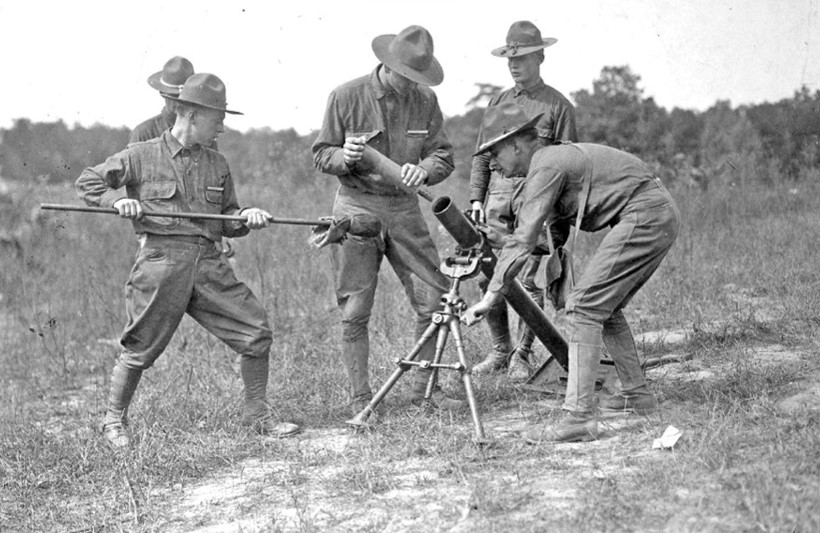
Camp Wheeler was used by the War Department as a mobilization center from 1917 to 1918 and as an infantry replacement center from 1940 to 1945. The first Camp Wheeler was established on 18 July 1917 and was officially closed on 10 April 1919.
On 8 October 1940, the second Camp Wheeler was established with construction beginning on 21 December 1940. The camp was an infantry replacement training center where new recruits received basic and advanced individual training to replace combat casualties. The camp was divided into three major portions: a cantonment area, maneuver areas, and the main impact area. The types of ammunition fired into the impact area were those common to the infantry weapons of World War I (WWI) and World War II (WWII). This ordnance included small arms ammunition (e.g., rifle and pistol rounds), anti-tank rockets, and mortar projectiles. To add realism to the training, 105 millimeter (mm) artillery projectiles were fired over the heads of troops during training in one of the impact areas. On the periphery of the impact area, explosive infantry weapons including grenades, Bangalore torpedoes, demolition charges, and booby traps were used in the maneuver and training exercises areas.
The camp was declared excess on 19 January 1946. After a dedudding operation was conducted in the fall of 1946 to clear MEC, the land was returned to private ownership. Soon after the Camp Wheeler property was returned to private ownership, MEC items were discovered on the property. A second dedudding operation was conducted in 1947, and a third dedudding attempt was made in 1949. Immediately following the third dedudding attempt, more MEC items were discovered. Subsequently some of the land was restricted from use because of the high density of MEC. Rather than attempt another dedudding operation, USACE South Atlantic Division instituted a policy that provided for an annual visual inspection of FCW. MEC items were discovered during the majority of these inspections. This policy remained in place until 1966.